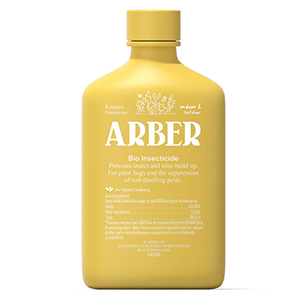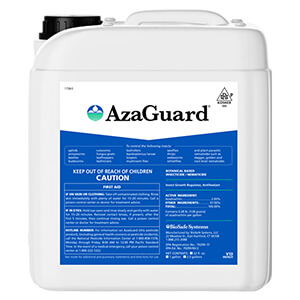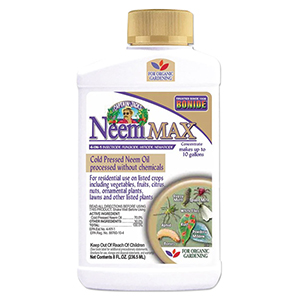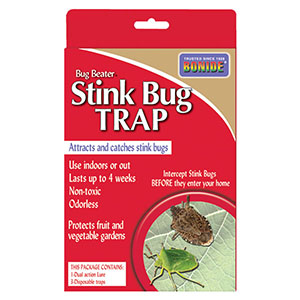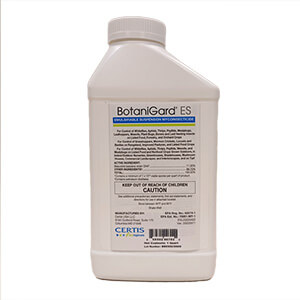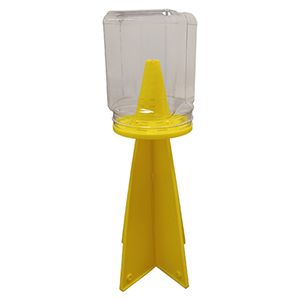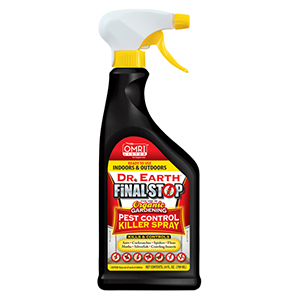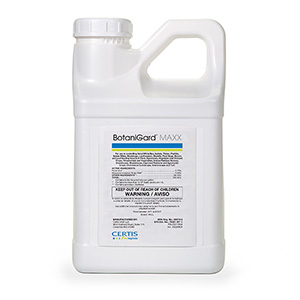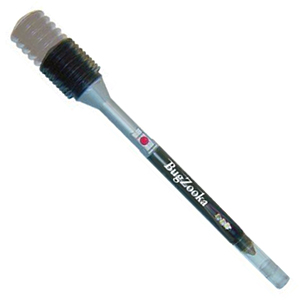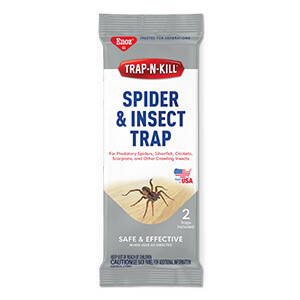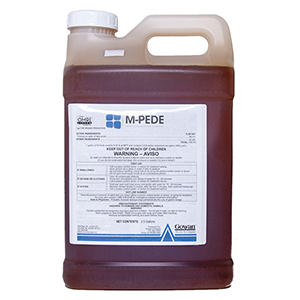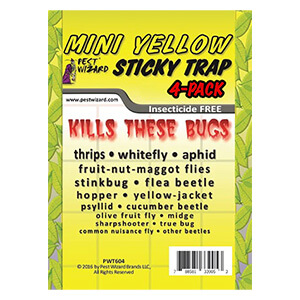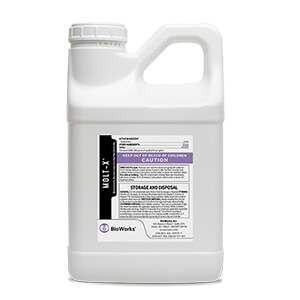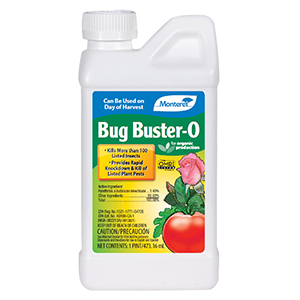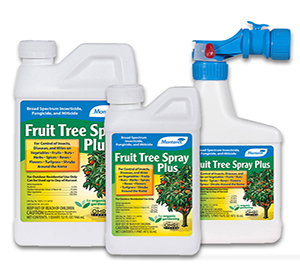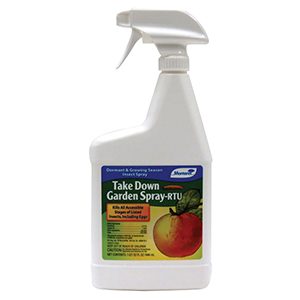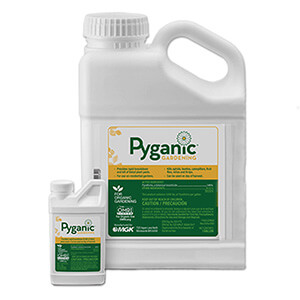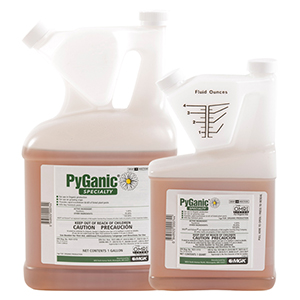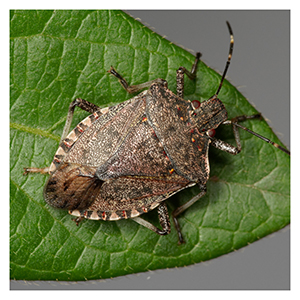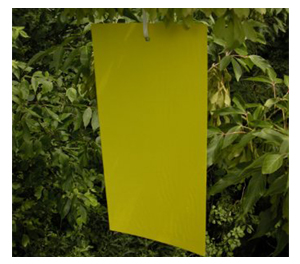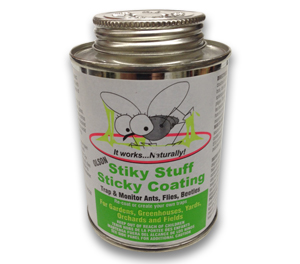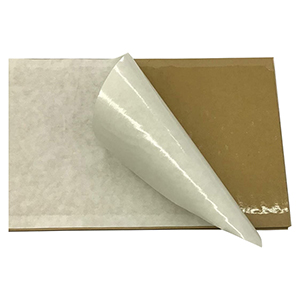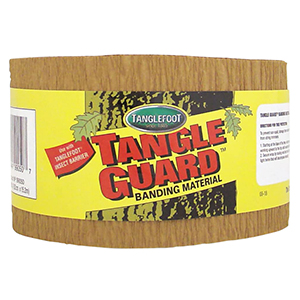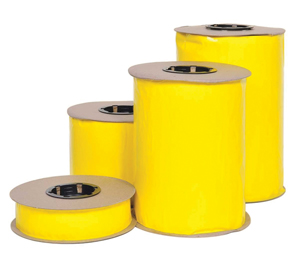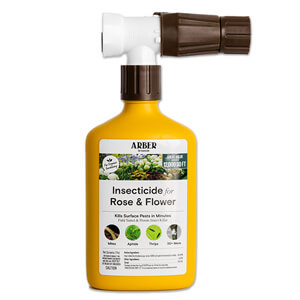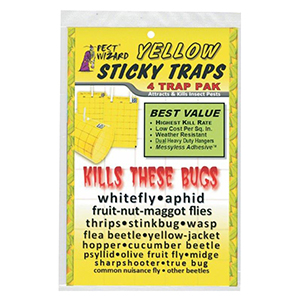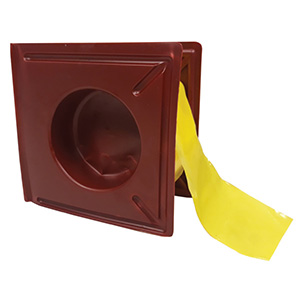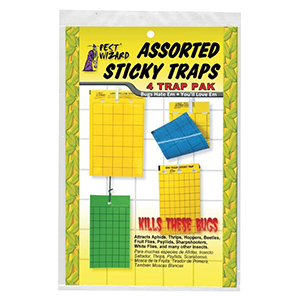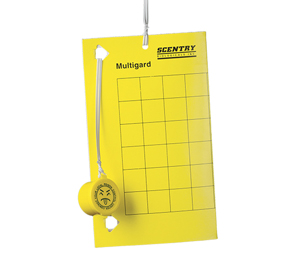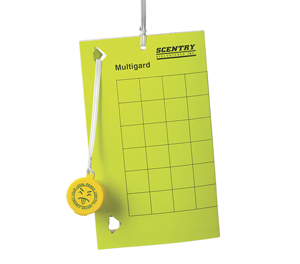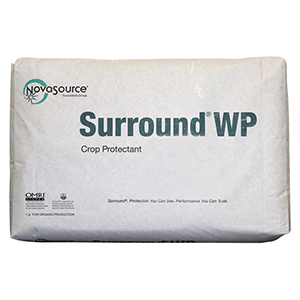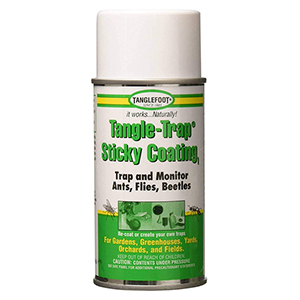Stink Bugs
Halmorpha halys
Brown Marmorated Stink Bugs are an invasive species that is native to eastern Asia. They were first documented in Pennsylvania in 2001 and by 2004, they had made their way across the country to Oregon. The mid-Atlantic region is still where the main population can be found, but clearly they may show up nearly anywhere.
Adult BMSB are small (about the size of a dime) and brownish-gray, with the shield-shaped body that is a characteristic of their species. They have one pair of segmented antennae, three sets of wings and three pairs of wings. BSMB start out as tiny nymphs (less than ½ an inch) that have black heads and thoraxes and abdomens that are an orangey-red with black markings. At this stage, they could be mistaken for ladybugs. BSMS nymphs have no wings (they grow those as they mature), so they're crawlers as opposed to the fliers they will become.
In the spring (usually April or May) BMSB emerge from their winter homes, rested up and ready to mate. From May through August, females will lay clusters of light green-yellow elliptical-shaped eggs, which they place out of sight under and amongst leaves. There may be as many as five generations a year, but usually it's one or two.
Adult BMSB use their piercing and sucking mouthparts to feed on plants. They seem to prefer some of our favorite crops - fruits, vegetables and field crops. They can quickly turn fruit inedible and unmarketable and literally suck the life out of other crops. The damage caused by BMSB to agriculture as a whole is not yet at the crisis level, but the damage they can do to a home garden can be considerable.
In late summer-early fall, BMSB begin searching for a safe place for them to enter diapause and winter in. They seek out small, tight areas out of sight and can flatten themselves to squeeze into surprisingly small cracks. Once they have found a spot, they send out a pheromone that acts as a signal for other stink bugs to join them (this is different than the predator-deterrent stink for which they're named). Ultimately, their number can swell into the hundreds of thousands.
BMSB QUICK FACTS :
- They don't cause structural damage to houses or other buildings and don't bite or sting.
- They're not known to carry diseases, although some people are allergic to them.
- They have few natural predators - apparently they taste as bad as they smell.
- Killing a stink bug will not attract more - that's a myth.
- During their winter dormancy they will not feed or reproduce.
- If they like their winter home, they will return to it the following year.
CONTROLLING STINK BUGS:
Be sure to approach stink bugs gently, when agitated they will emit their dreaded stink. So don't stomp or beat on them or try to kill them in any violent fashion.
- Vacuuming - For stink bugs in the house, vacuuming them up seems to be a preferred method of removal. It works fast and keeps you at a distance from them. But they will stink up your vacuum, so you will want to empty the bag immediately afterwards and never use a bagless vacuum cleaner.
- Insecticides - Many common insecticides just aren't effective against stink bugs. This is especially true regarding those that work as suffocants, such as botanical oil insecticides. Your best bet with insecticides is to use it when the insects are nymphs and to go with an insecticidal soap spray or one that has neem oil or pyrethrins. See below for insecticides labeled for Stink Bug control.
- Sticky Traps - It never hurts to put out sticky traps. You may catch an adult flying around and, while it's less likely, a nymph may crawl onto it. Another advantage is that you will find out what other insects are hanging around your garden. Click here to shop all Sticky Trap options.
- Kaolin Clay - When applied to foliage this product repels pests. It also causes irritation and confusion and is an obstacle to feeding and egg-laying. Surround WP is Kaolin Clay option.
- Lighted Traps - Like most insects, stink bugs are attracted to light. So if you have them in your home, you may want to try these. Since they're are such good hiders, you'll need to lure them out somehow. Many people report success with lighted traps designed for other insect pests, like fleas or gnats. This method will not eliminate a whole colony hiding in your walls, but it may catch just enough stragglers to give you peace of mind.
- Secure Your Home - It's best to head off a fall invasion by defending your home ahead of time. On the outside of your house, anything that could function as a hiding spot and is touching the house should be moved, this includes firewood, dead leaves, tree branches and other debris. Seal up any cracks under doors and windows, around foundations, and in attics. Since they are attracted to light, go outside at night and see how much light is leaking out and where. If possible, plug up those leaks.
As with all insect control, it is best to act against stink bugs as soon as you see them. As their numbers go up, control becomes much more difficult.
-
$15.99–$23.99
-
$4.99–$87.50
-
$275.00–$2,495.00
-
$13.99–$20.99
-
$16.99
-
$110.00–$1,296.00
-
$4.50–$35.00
-
-
$115.00–$1,314.00
-
$6.75–$29.99
-
$2.99–$12.71
-
$153.00–$275.40
-
$6.99–$29.95
-
$250.00–$875.00
-
$31.49–$58.79
-
$29.49–$45.99
-
$12.99–$129.99
-
$270.00
-
$28.00–$236.00
-
$179.20–$650.00
-
$20.00–$80.00
-
$5.49–$45.00
-
$12.00–$57.50
-
$33.00
-
-
$50.00–$9,600.00
-
-
-
-
$6.99$5.99 -
-
-
$56.25
-

